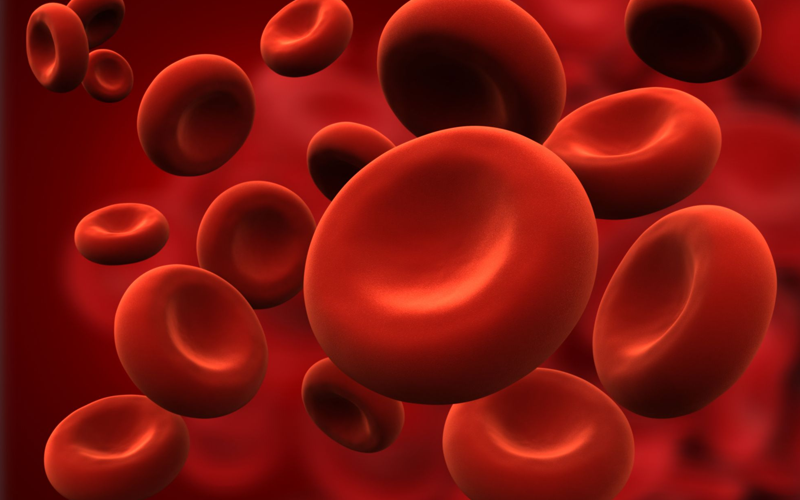Iron Deficiency Anemia
Iron deficiency anemia is a common blood disorder that occurs when red blood cell counts are low due to a lack of iron. Red blood cells need iron to produce a protein called hemoglobin that helps them carry oxygen from the lungs to all the parts of the body. Iron deficiency is the most common cause of anemia in otherwise healthy children in the United States.
- Children with iron deficiency anemia may tire easily, have pale skin and lips and have a fast heartbeat.
- Iron deficiency anemia is usually discovered by a blood test during a routine medical examination.
- Mild iron deficiency anemia is usually treated by consuming an iron-rich diet or taking oral iron supplements. More severe iron deficiency may be treated with IV iron or even blood transfusion.
- In children with a rare, inherited version of iron deficiency anemia – iron-refractory iron deficiency anemia (IRIDA) – the child is born with a gene mutation that causes iron deficiency, and may require regular intravenous iron infusions.

Iron Deficiency Anemia Treatment
Children and young adults with anemia are treated through our Blood Disorders Center.
What are iron deficiency anemia symptoms and causes?
hat are the symptoms of iron deficiency anemia?
The most common symptoms of iron deficiency anemia include:
- pale skin, lips, and hands, or paleness under the eyelids
- irritability
- lack of energy or tiring easily
- increased heart rate
- sore or swollen tongue
- a desire to eat peculiar substances, such as dirt or ice (also called pica)
What causes iron deficiency anemia?
Iron deficiency anemia can be caused by:
- Diets low in iron: Only 1 mg of iron is absorbed for every 10 to 20 mg of iron-rich food ingested.
- Body changes: Body changes, such as rapid growth spurts in infants and adolescents, require increased iron and red blood cell production.
- Gastrointestinal tract abnormalities: Any abnormality in the digestive tract limits iron absorption. Difficulty absorbing iron is common after some gastrointestinal surgeries.
- Blood loss: Blood loss, such as gastrointestinal bleeding or injury, can decrease the amount of iron in a child’s body.
- Genetic causes: Rarely, children with are born with iron-refractory iron deficiency anemia (IRIDA), caused by a gene mutation that causes iron deficiency.
How is iron deficiency anemia diagnosed?
Iron deficiency anemia may be suspected based on general findings from a complete medical history and physical examination, such as:
- complaints of tiring easily
- pale skin and lips
- fast heartbeat
Iron deficiency anemia is usually confirmed through a complete blood count, which measures the number of red blood cells and their concentration of hemoglobin. Other blood tests may also be performed.
What are options for iron deficiency anemia treatment?
Iron deficiency anemia treatment may include:
- Iron-rich diet – consuming foods that are rich in iron (see chart below)
- Iron supplement – taking an oral iron supplement over several months to increase iron levels in blood. It should be taken on an empty stomach or with orange juice to increase absorption. In some children, it may irritate the stomach and discolor bowel movements.
Iron-rich Foods to Treat Iron Deficiency Anemia
| Iron-rich Foods | Quantity | Approximate Iron Content (milligrams) |
| Oysters | 3 ounces | 13.2 |
| Beef liver | 3 ounces | 7.5 |
| Prune Juice | 1/2 cup | 5.2 |
| Clams | 2 ounces | 4.2 |
| Walnuts | 1/2 cup | 3.75 |
| Ground beef | 3 ounces | 3.0 |
| Chickpeas | 1/2 cup | 3.0 |
| Bran flakes | 1/2 cup | 2.8 |
| Pork roast | 3 ounces | 2.7 |
| Cashew nuts | 1/2 cup | 2.65 |
| Shrimp | 3 ounces | 2.6 |
| Raisins | 1/2 cup | 2.55 |
| Sardines | 3 ounces | 2.5 |
| Spinach | 1/2 cup | 2.4 |
| Lima beans | 1/2 cup | 2.3 |
| Kidney beans | 1/2 cup | 2.2 |
| Turkey, dark meat | 3 ounces | 2.0 |
| Prunes | 1/2 cup | 1.9 |
| Roast beef | 3 ounces | 1.8 |
| Green Peas | 1/2 cup | 1.5 |
| Peanuts | 1/2 cup | 1.5 |
| Potato | 1 | 1.1 |
| Sweet potato | 1/2 cup | 1.0 |
| Green beans | 1/2 cup | 1.0 |
| Egg | 1 | 1.0 |
What is the latest iron deficiency anemia research?
Our physician scientists are conducting innovative research on anemias and red blood cell disorders. We have a long track record of innovation, and Dana-Farber/Boston Children’s Cancer and Blood Disorders Center is considered a world leader in laboratory and clinical research on blood disorders. Regarding iron deficiency anemia research specifically:
- We are conducting ongoing research on better ways to screen for iron deficiency and to predict who will respond to oral iron supplements.
- We are conducting studies to determine the molecular basis of iron-refractory iron deficiency anemia (IRIDA) and other rare blood disroders.
What is the long-term outlook for iron deficiency anemia?
Iron deficiency anemia cannot be corrected overnight by oral supplementation but generally a child will begin to feel better a week after he/she begins oral supplementation. However, it may take weeks or months to replenish the body’s iron reserves.
Iron Deficiency Anemia Frequently Asked Questions
If you Have Any Queries, Call Us On
+91-8193809030
